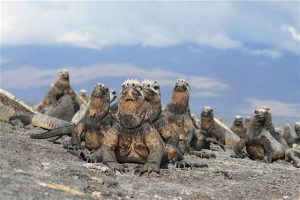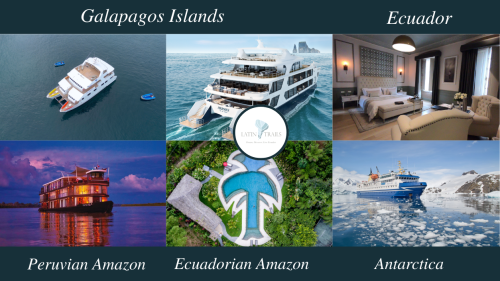 Santiago: This Island was a major base where early buccaneers and pirates stocked up on fresh water and food. Santiago is also a case study in the potential destruction caused by introduced species. Recent efforts have greatly reduced the size of groups of wild goats, but they are still causing disorder on certain native species, including giant tortoises. Most of the sea lions in the Galápagos are California sea
Santiago: This Island was a major base where early buccaneers and pirates stocked up on fresh water and food. Santiago is also a case study in the potential destruction caused by introduced species. Recent efforts have greatly reduced the size of groups of wild goats, but they are still causing disorder on certain native species, including giant tortoises. Most of the sea lions in the Galápagos are California sea
lions. But on Santiago Island, you will have the chance to see the only endemic species of sea lion in the Galápagos. You will have an opportunity to take advantage of the excellent snorkeling here; if you're lucky, you'll see sea turtles. The island is also full of coastal birds such as great blue herons, lava herons, and yellow-crowned night herons.
Española: From May through December, albatrosses settle down here to mate and take care of their young. During May and June, if you visit this island early in the morning, you can witness the beak-cracking mating ritual of the
albatross. Later in the season from September through December, you can see the little chicks. There must be some sort of aphrodisiac on this island because this is also a great place to see blue-footed boobies doing their mating dance, where the male extends his wings and lifts his beak at his prospective mate. If the female likes what she sees, she mimics her suitor.
Isabela: This is the largest island in the Galápagos, formed by the volcanic activity and eventual joining of six different volcanoes; five of them are still active. Darwin's Lake provides an excellent backdrop for dramatic photos of the sea. The island is home to several different species of the giant Galápagos land tortoise, which can commonly be seen in several protected areas. One of the common species here is the flamingo, found in the namesake Pozo de los Flamingos (Flamingo Pond), close to the main town of Puerto Villamil. Among the main attractions on Isabela is El Muro de Lagrimas (The Wall of Tears), a stone wall that was used as a torture mechanism for prisoners kept in a penal colony here during the mid-20th century. Isabela also has several great hiking and mountain-biking options. Perhaps the most popular is to Cerro Negro a massive, still active crater often nestled in clouds and Cerro Chico, which offers spectacular panoramic views. In town, you can also see graffiti that dates back to 1836. Tour companies in town, and ships stopping here, usually offer dinghy rides around Tagus Cove, where you will have the opportunity to see the Galápagos penguins.
Rabida: Also known as Jervis Island, has a beautiful red-sand beach that is almost always heavily populated with sea lions. Just behind the beach is a small saltwater lagoon that is a good place to see flamingos. A small loop trail leads to the top of a hill, with some good views of the island's coastline. Some experts say that the waters of Rábida offer the best snorkeling in the islands.
Genovesa: Is located on the far northeastern end of the archipelago. It's a long, often rough sail here, and only the longer tours include a visit to Genovesa. Almost every Galápagos tourist brochure has a picture of a frigate bird puffing up its red neck in an attempt to attract females. On Genovesa you'll have ample opportunities to see these birds in action. This island is also home to the largest colony of red-footed boobies on the archipelago. On another side of the island, you can see masked boobies and storm petrels.
Floreana: This small island, the first to be inhabited. Today about 100 people live on this island, which is seldom visited by tourists. If you decide to visit, be sure to stop at Post Office Bay, where a barrel full of letters and postcards sits on the beach. It's a tradition begun years ago If you see a letter or card addressed to someone in your town or country, you are supposed to carry it and post it from home. In exchange, feel free to leave a letter or postcard of your own for someone else to return the favor
.
